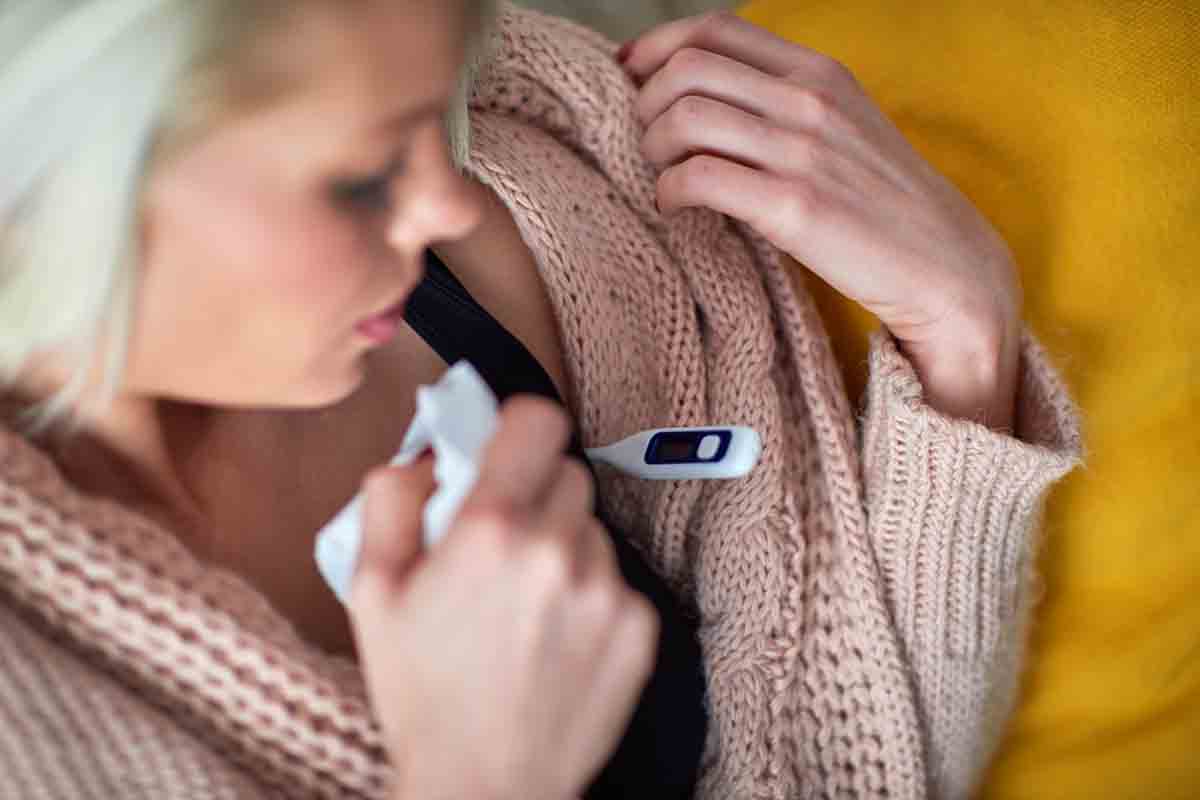11 Tips to Get Pregnant Faster and Boost Your Chances of Conceiving

So you've decided to have a baby. Congratulations! Many people assume pregnancy will occur as soon as they stop birth control, and are surprised when it takes hard work to conceive.
Although there is no magic pill to get pregnant, some simple methods have been shown to improve your odds.
Whether they are scientifically proven or simply an old wives' tale, we’re going over advice and tips that may boost your fertility and increase your chances of getting pregnant!
Related: Can You Get Pregnant When You're Not Ovulating?
Common Reasons for Trouble Conceiving
The list of reasons that you may be struggling to conceive is long. However, for most healthy couples, the biggest issues are having time and patience. The chances of conceiving in the first cycle are about 30%, with a decrease every month after that.
The average healthy couple trying to conceive has about an 85-90% chance of conceiving in the first 12 months. If you haven’t gotten pregnant within one year of trying, it’s time to talk to your healthcare provider about what options are available and address any possible fertility issues.
If you are over 35 years old, you should talk to your healthcare provider after six months of trying to conceive.
What can you do to maximize your chances of conceiving on your own? Read below for some helpful information.
Tips to Increase Your Chances of Getting Pregnant
If you are trying to naturally calculate your cycle and help pinpoint ovulation, there are a few fertility awareness methods (FAM) that can help.
1. Have Sex (Not Just in Your Fertile Window)
Sure this seems obvious, but not everyone knows the ins and outs of when and how often to have intercourse. In order for a pregnancy to occur, an egg and sperm have to meet at the right time.
There is no “safe” time to go without birth control if you wish to avoid pregnancy, but there is a fertile period in the middle of the menstrual cycle, and it’s important to time intercourse to this window if you want to conceive.
While it's true that a female needs to be ovulating to get pregnant, ovulation can occur at different times from month to month and this can lead people to miscalculate their most fertile days.
Using an app to track cycles will rarely give you insight into your own body’s rhythm, as most apps are based on averages. Timing intercourse to only the fertile window could decrease the odds of pregnancy if you are a person who ovulates a bit later or earlier than average.
Additionally, an egg is only viable for 24 hours after ovulation, making it nearly impossible to time sex perfectly. Many people assume that having intercourse multiple times per day during the ovulation window will improve their chances of pregnancy, but this may reduce the sperm count and actually decrease your chances of conceiving.
Mayo Clinic recommends timing intercourse every day or every other day during the ovulation window, or at least every two to three days throughout the month. This should allow for the best chances of conception during the ovulation window.
Sperm can live up to five days once it has been deposited in the vagina, so regular intercourse will increase your chances of getting pregnant, even if you have sex a few days before you ovulate.
2. Track Your Basal Body Temperature
One common fertility awareness method is to take your temperature every morning before you get out of bed. This is called basal body temperature tracking.
During the first half of your monthly cycle, your temperature will be around 96-96 degrees. Your body temperature will increase by about one-half to one full degree when ovulation has occurred. Because this can be difficult to notice just by looking at the temperature reading, most people will use a chart to track their basal body temperature.
By charting your temperature for several months, you'll be able to calculate when you ovulate a little more easily, and therefore increase your chances of getting pregnant.
3. Watch for Changes in Cervical Mucus Color and Texture
Another FAM option is to monitor the color and texture of your cervical mucous. The consistency of cervical mucus changes throughout the different phases of your cycle. It can be dry and sticky, thin and clear, or slippery like egg whites.
The cervical mucus that occurs around the time of ovulation is the type that is slippery like egg whites. By tracking the changes in your cervical mucus, you will have a better idea of when to time intercourse to maximize the chances of conceiving.
4. Track Your Menstrual Cycle with The Calendar Method
The Calendar Method is another FAM that can be used to predict ovulation. This one is less accurate than tracking basal body temperature or monitoring cervical mucus, but can still help by giving you important information about the length of the menstrual cycle so you can predict when ovulation may occur.
For most people, ovulation occurs around the 14th day of your cycle. However, for people with longer or shorter cycles, this day will vary. Using the calendar method to trend the menstrual cycle may help you determine if you are ovulating earlier or later than average.
5. Try Ovulation Predictor Kits
Not interested in checking your cervical mucus or tracking your basal body temperature every morning? Luckily, there is a simple alternative if you’re willing to shell out a little bit of cash. Every time the body prepares to release an egg, there is a surge of a hormone called Luteinizing Hormone.
This hormone can be detected in urine, much the same as pregnancy hormone can be detected in urine. Because we know the surge in Luteinizing Hormone can be detected in urine, tests are available to watch for this spike.
These tests are called ovulation predictor kits. For people who have regular and predictable menstrual cycles, using ovulation predictor kits during the week that they expect to ovulate will probably be sufficient to pinpoint the actual day.
For people with irregular cycle length, ovulation predictor kits can be used every day of the month to help time intercourse to maximize the chances of pregnancy.
6. Be at a Healthy Weight
Studies have shown that females with a body mass index (BMI) of over 30 or under 20 have a harder time getting pregnant than those in the 20 to 30 range. The reason is that your body fat produces hormones that affect your menstrual cycle, and being over- or underweight can disrupt your natural cycle by causing irregular periods or can cause problems with ovulation.
Even the success rate of fertility treatments such as in vitro fertilization (IVF) may be lower in people who have obesity. Females with obesity can see improvement in their chances of getting pregnant with just a 5-10% weight loss. So strive for a healthy BMI, with the most ideal range being between 20-24.
Even in people who have a higher BMI and don’t have much weight loss, regular exercise can help regulate menstrual cycles and improve your chances of conceiving. Exercise can also improve mood and increase your overall health.
Newer research also suggests that males with obesity have higher rates of problems with sperm count. While trying to conceive, focusing on healthy foods and working on increasing daily exercise or activity levels may boost fertility for both partners.
7. Choose Boxers Over Briefs

While the focus of conceiving a baby is often on the female partner, male partners contribute to fertility issues just as often. To produce the right quality and quantity of sperm, the temperature of a man's testes must be lower than the body temperature.
This is why the testicles are located outside of the body. Wearing snug-fitting briefs may the temperature of the testes by holding them too close to the body.
Testes that are too warm may decrease sperm count. Have your partner ditch his briefs in favor of some looser-fitting boxers, but be aware that it takes 10-11 weeks to produce sperm, so don't expect overnight results.
Another temperature-related factor that could affect your partner’s sperm count is enjoying warm baths or soaking in a hot tub. Cutting back on prolonged exposure to warm water may reduce this risk.
8. Cut Back on Alcohol
In addition to temperature, other environmental factors may influence male fertility. If your partner likes to drink alcohol frequently, this could cause a decrease in testosterone and sperm production and quality. Cutting back on alcohol consumption could improve your chances of conceiving and decrease potential fertility issues.
Just remember, there is no surefire way to increase sperm count. If you and your partner are having trouble conceiving, getting him seen by a healthcare provider and tested for low sperm count or quality is something to consider.
9. Ditch the Caffeine
Although there is no solid proof, some studies have shown a link between caffeine consumption and the ability to conceive. To be safe, try to consume less than 300 milligrams a day. Since drinking large amounts of caffeine while pregnant is a no-no anyway, you might as well start cutting back now.
There is also some evidence that high caffeine consumption may have an impact on sperm quality. While the evidence is not strong, your partner can act in solidarity with you while you are trying to conceive.
It can be easier to cut out coffee or limit your general caffeine intake when you both can support each other.
10. Soak Up Some Vitamin D
Some studies have also shown vitamin D to play a part in hormone production in both male and female partners. In addition, vitamin D helps maintain proper levels of calcium in your body and can help contribute to a healthy pregnancy.
While no studies have directly linked sunlight and conception, it can't hurt to get a little extra. Just remember to keep unprotected exposure down to only 5-10 minutes, so as not to damage your skin.
The amount of vitamin D found in foods is often negligible, so many experts recommend a dietary supplement to ensure your vitamin D needs are met. Many experts recommend taking prenatal vitamins while trying to conceive.
Make sure your prenatal vitamin has both vitamin D and folic acid, which is another important nutrient that is needed to make sure your baby’s spine development is normal.
11. Don't Stress
Easier said than done, right? All humans feel stress, and most people who have conceived a healthy pregnancy feel that they have stress in their lives. However, some research has suggested that stress management, such as yoga and meditation, can play a role in female fertility.
While there is no easy way to reduce stress, focusing on self-care and prioritizing activities that you love while trying to conceive may help decrease your general stress and improve your overall health.
Debunking Common Fertility Myths
When it comes to fertility, there are many myths and misconceptions that can lead to confusion and anxiety. From old wives' tales to urban legends, it can be challenging to sort out what's true and what's not. We’re debunking common fertility myths to separate fact from fiction.
Myth 1: Certain Sex Positions Improve Your Odds
Don’t focus on a specific sex position to improve your odds of conceiving. In spite of what you may have read or heard, there is no sex position that improves your chances of conceiving. The important thing is for the sperm to end up close to the cervix, and most sex positions will achieve this. So focus on the sex positions you enjoy, and don’t worry about specific positions.

Myth 2: Keep Your Hips Elevated After Intercourse
There is no evidence that keeping your hips elevated after intercourse has an impact on fertility. In a European study, people who kept their hips elevated after intercourse did not have a higher chance of pregnancy after undergoing intrauterine insemination (IUI).
Myth 3: Eat Special Fertility Superfoods
Specific foods are unlikely to reduce or improve your fertility or help you get pregnant fast. However, focusing on healthy eating for your overall health is a good plan.
Eating lots of whole grains and adding healthy proteins and fats to your diet may make you feel better overall, and that is never a bad thing!
When to See Your Healthcare Provider
So you have tried all of these things and still have not conceived a healthy pregnancy – when is it time to see your healthcare provider?
Most healthcare providers agree that if you have not conceived after 12 months of unprotected intercourse, it’s time to talk to an expert about infertility concerns.
There may be times when it is appropriate to seek out expert guidance even sooner, such as in people who are over 35 years of age or have underlying health conditions that may make conceiving a pregnancy harder or more complex.
If you’re not sure, make an appointment for a checkup with your gynecologist or healthcare provider to discuss the next best steps.

